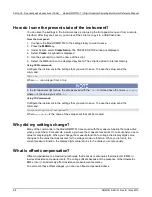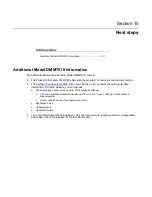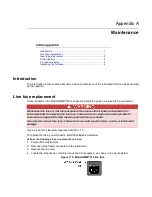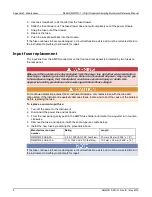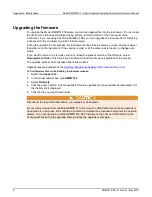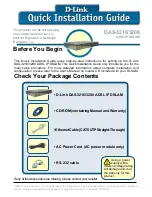
Appendix 0: Common commands
Model DMM7510 7½ Digit Graphical Sampling Multimeter Reference Manual
2
DMM7510-901-01 Rev. B / May 2015
*CLS
This command clears the event registers and queues.
Type
Affected by
Where saved
Default value
Command only
Not applicable
Not applicable
Not applicable
Usage
*CLS
Details
This command clears the event registers of the Questionable Event and Operation Event Register
set. It also clears the event log. It does not affect the Questionable Event Enable or Operation Event
Enable registers.
This is the equivalent of sending the SCPI commands
:STATus:CLEar
and
:SYStem:CLEar
or the
TSP commands
status.clear()
and
eventlog.clear()
.
To reset all the bits of the Standard Event Enable Register, send the command:
*ESE 0
Also see
(on page 2)
(on page 6-132)
(on page 8-245)
*ESE
This command sets and queries bits in the Status Enable register of the Standard Event Register.
Type
Affected by
Where saved
Default value
Command and query
Not applicable
Not applicable
See
Details
Usage
*ESE <n>
*ESE?
<n>
The value of the Status Enable register of the Standard Event Register (0 to 255)
Details
When a bit in the Status Enable register is set on and the corresponding bit in the Standard Event
Status register is set on, the ESB bit of the Status Byte Register is set to on.
To set a bit on, send the constant or the value of the bit as the
<n>
parameter.
If you are using TSP, you can set the bit as a constant or a numeric value, as shown in the table
below. To set more than one bit of the register, you can send multiple constants with
+
between
them. You can also set
standardRegister
to the sum of their decimal weights. For example, to set
bits B0 and B2, set
standardRegister
to 5 (which is the sum of 1 + 4). You can also send:
status.standard.enable = status.standard.OPC + status.standard.QYE
If you are using SCPI, you can only set the bit as a numeric value.
When zero (0) is returned, no bits are set. You can also send 0 to clear all bits.

